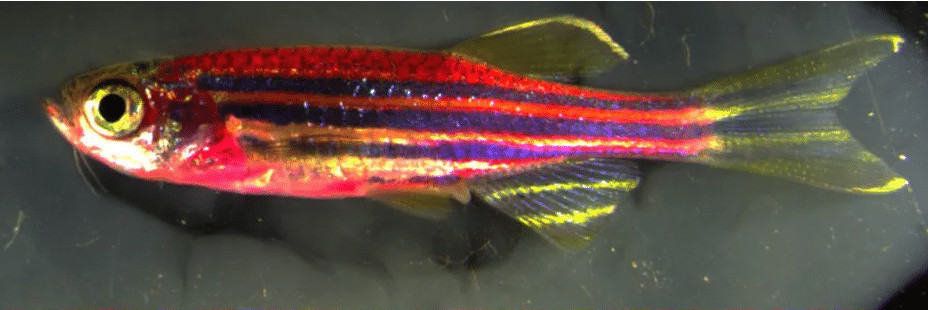
Forget a pot of gold – the “skinbow” is probably what you’d find if you ever manage to make it to the end of a rainbow. This genetically engineered zebrafish was created by scientists at Duke university to look more like the ultimate crayon collection than its less colorful non-enhanced relative.
The purpose of the added color goes a little deeper than visual appeal, they are hoping to more easily track skin cell activity in real time. Changing the colors allowed the team to watch changing skin cells throughout the entire lifespan of the fish.

Image: gizmag.com
“Before we can fully understand tissue regeneration, we need to be able to monitor what individual cells are doing,” says lead researcher Kenneth Poss. “This is a cutting-edge way to visualize hundreds or thousands of cells at once in a regenerating tissue.”
Experiments conducted on the fish included minor regenerative tests like scratching off cells to amputating fins. Zebrafish are perfect for these test because of their rapid level of regeneration.
“Watching these cells is how regeneration happens,” says Poss. “Regeneration is the process of many cells dividing, moving, changing in shape and size. We’ve seen after amputating a fin that skin cells can be highly mobile; they can be recruited into new tissue as it regenerates, so they show impressive migration.”
The skinbow experiment is just the beginning. Researchers hope this technology will allow imaging techniques to provide a clearer picture of how skin cells operate.







